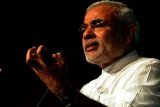Libor rigging: What is it all about?
What is libor?
Banks borrow / lend regularly amongst themselves to manage their balance sheet. Libor or the London Interbank Offered Rate is the benchmark rate for this borrowing / lending. A panel of banks publish the interest rate at which they are willing to borrow on a daily basis for different maturity; this is collated, the top & bottom four quotes are eliminated and the average of the rest of the quotes is published by BBA (British Bankers Association) every day, before mid-day UK time.
This rate is then used to fix the interest liability on borrowings of corporate, credit cards, mortgages, car leases, bank deposits among others. Libor is published every day for ten currencies and 15 maturities (ranging from overnight to one year) for each currency.
How is Barclays involved?
It is reported that between 2005 and 2009, Barclays’ traders influenced the pricing of these rates. Initially, apparently a small number of individual traders submitted an overstated interest rate, to boost profit of their desk. During the peak of credit crisis (between 2007 and 2008), Barclays lowered its libor submission in order to protect the reputation of the bank from:
- Negative speculation which arose as a result of its earlier overstating came under scrutiny; and
- To make the bank look healthier and therefore able to borrow at lower rates.
More like this
The bank has been slapped a fine of over $450m by the UK and US regulators. The issue attracted huge public and political attention. Barclays Plc decided to offer its chairman Marcus Agius (married into Rothschild dynasty, incidentally) as a sacrificial lamb; but, for once, the authorities were quick to act and get appropriate guys to pay the price.
Bob Diamond and Jerry Del Missier who were at the helm of the affairs at Barclays Capital at the time of libor scandal (who later went on to become CEO and COO of Barclays Group) have both resigned recently under duress.
One can't be heading a top-class investment bank and look to get away saying: "I had no clue of what a bunch of my traders were doing" or "every bank did it" or "most days, no requests (to rig) were made".
The Economist which generally is never out-of-line observes "this was rather like an adulterer saying that he was faithful on most days".
What is the impact of libor rigging on the financial sector, the economy and savers?
The exact nature of detriment caused by Barclays' rate manipulation is hard to assess. It has being argued that it only made a few basis points difference (one basis point is one hundredth of a percentage). In the context of enormous financial market, there is no "just a little". Global derivative market is estimated to be $350 trillion; assuming libor was manipulated by one basis point, the financial implication is $35bn a year. We are neither putting a number to the magnitude of manipulation nor suggesting that all gains went to Barclays. However, whether they overstated or understated libor, it is certain that it has affected financial market end users including savers and borrowers.
What's more?
Barclays has been the first to be assessed by the regulators. What is worse is that we are probably going to find out that many other major banks too are involved in this scam. There will be a huge wave of lawsuits over libor scandal – lawsuits that will drag on for decades.
At a time when confidence in global financial markets is already declining, this certainly is no good news. Barclays and its partners-in-crime have completely destroyed the legitimacy and trust which are the very basic fabrics of financial intermediation.
Kamala Aithal is the founder of a consulting firm that assists corporates develop Risk Management Framework and a regular contributor to Wisonomics column. The views and opinions expressed in this article are those of the author and does not reflect the views or position of IndiaNewsBulletin.com
Most read
- 2017: Full list of Indian States, capitals and their Chief Ministers; Nitish Kumar quits and takes oath again as Bihar CM!
- List of all the major rivers of India: Names, Origin and Length
- Ram Nath Kovind is 14th Indian President after Pranab Mukherjee. Here's a list of all Indian Presidents since 1950
- Indian cabinet September 2017: Full list of Ministers and their portfolios in Narendra Modi government
- Bollywood Dream Team 2016: Katrina, Alia, Sidharth, Varun, Parineeti, Aditya Roy Kapur US tour in August
- South Indian actress Trisha Krishnan’s father passes away
- Deepika Padukone's Ghoomar song and dance from Padmavati is sensational
- Commonwealth Games 2014: Full list of Indian gold, silver and bronze medal winners
- Lycamobile's Indian arm offers 1-rupee roaming SIM for Desi travellers
- Dilwale Gerua song video and pics: Kajol and Shah Rukh Khan recreate chemistry and romantic magic
India News Bulletin by email
More Lead Stories
- Deepika Padukone's Ghoomar song and dance from Padmavati is sensational
- Bollywood Celebs' Diwali 2017 Pics: Kapoors, Bachchans and Khans and More from B-Town
- Diwali 2017 in UK: Cultural Programme at Trafalgar Square London and community celebrations
- Pics: Salman Khan in London for his Global Diversity Award
- Osterley Gymkhana London hosts 70th Indian Independence Day Celebrations













